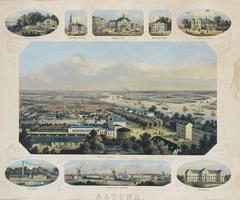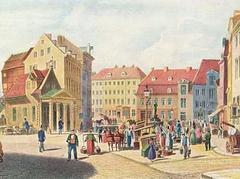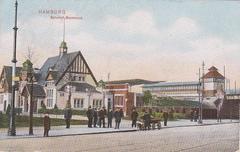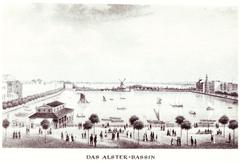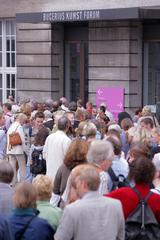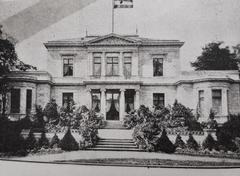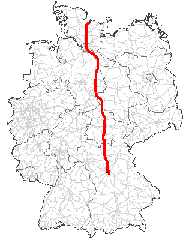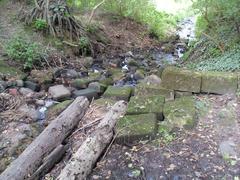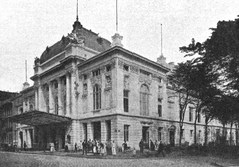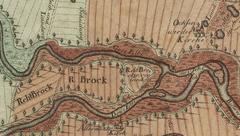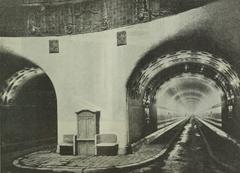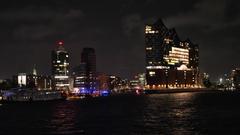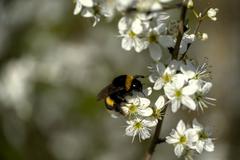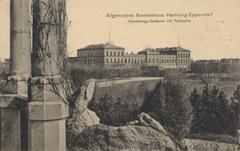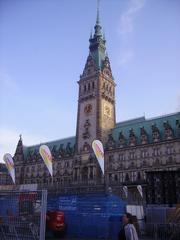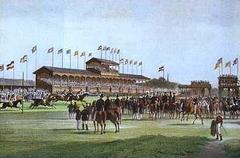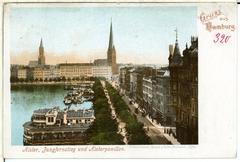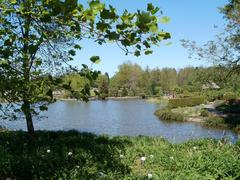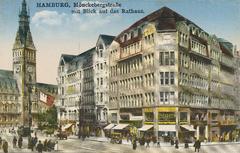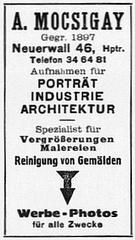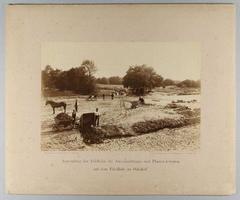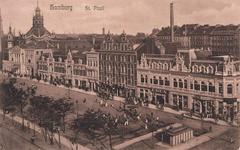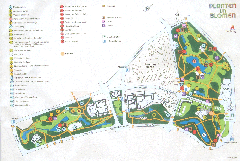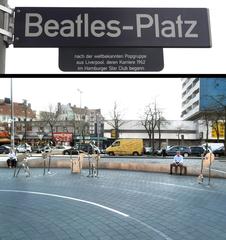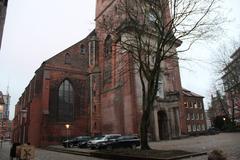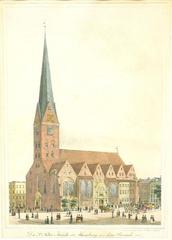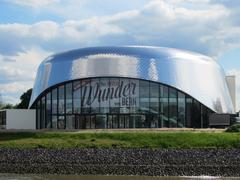Comprehensive Guide to Visiting Fischbeker Heide, Hamburg, Germany
Date: 17/08/2024
Introduction
Fischbeker Heide, located in the southern part of Hamburg, Germany, is a remarkable blend of historical significance and natural beauty. This expansive nature reserve, covering over 700 hectares, is a sanctuary for both rare flora and fauna and a site of immense archaeological importance. The landscape of Fischbeker Heide is a mosaic of heathlands, forests, and ancient burial mounds, making it a fascinating destination for history enthusiasts, nature lovers, and casual visitors alike.
The area’s history dates back to the Neolithic period, evidenced by numerous archaeological discoveries, including megalithic structures and burial mounds from the Bronze and Iron Ages (Wikipedia). These relics form part of the largest collection of above-ground archaeological monuments in Hamburg, protected under monument conservation laws. The transformation of the landscape during the medieval period due to extensive deforestation and the subsequent spread of common heather has shaped the unique heathland that we see today (Metropolregion Hamburg).
Modern conservation efforts have been crucial in preserving this unique ecosystem. Initiatives by the Hamburg Environmental Authority, including the introduction of Heidschnucken sheep for landscape management, have helped maintain the open heathland (Hamburg Travel). The Archaeological Hiking Trail, managed by the Archaeological Museum Hamburg, offers visitors a journey through time, providing insights into the area’s rich past while promoting the conservation of these historical sites (Lüneburger Heide).
Whether you’re interested in exploring ancient history, enjoying scenic hikes, or observing unique wildlife, Fischbeker Heide has something to offer. This comprehensive guide provides essential information on visiting hours, travel tips, and the best times to visit, ensuring you have a memorable experience in this captivating landscape.
Table of Contents
- Introduction
- Historical Significance
- Visitor Information
- Special Events and Activities
- FAQs
- Conclusion
- Sources
Historical Significance
Early Human Settlement
The Fischbeker Heide area boasts a history of human settlement dating back to the Neolithic period. Archaeological finds, including ground monuments and megalithic structures, indicate that the region was inhabited as early as the Stone Age (Wikipedia).
Bronze and Iron Ages
The Bronze and Iron Ages also left significant imprints on Fischbeker Heide. The landscape is dotted with burial mounds and stone graves from these eras. Visitors can explore these ancient sites via the Archaeological Hiking Trail, which features 13 stations showcasing artifacts and structures from these periods (Hamburg Travel). The trail was restored in 2002 to preserve these historical treasures.
Medieval Transformations
During the medieval period, extensive deforestation occurred in Fischbeker Heide as human activities expanded. The original oak and birch forests were cleared for agriculture and grazing, allowing the spread of common heather (Calluna vulgaris), which now dominates the landscape (Metropolregion Hamburg).
Modern Conservation Efforts
In the late 20th century, significant efforts were made to preserve the unique heathland landscape of Fischbeker Heide. The Hamburg Environmental Authority initiated large-scale clearings to maintain the heath as a cultural landscape. Additionally, a herd of Heidschnucken sheep is kept in the area to prevent the encroachment of trees and shrubs, ensuring the heathland remains open (Wikipedia).
Archaeological Hiking Trail
Managed by the Archaeological Museum Hamburg, the Archaeological Hiking Trail offers a journey through time with well-preserved burial sites and informative signage at each station. This trail highlights the area’s ancient history while providing a scenic route through the diverse landscape of the heath (Lüneburger Heide).
Impact of Military Use
Until 2005, a large military training area bordered Fischbeker Heide. This area, located on the Niedersachsen side, was used extensively for military exercises, which helped maintain open sand surfaces and heathland. Parts of this former training ground have since been integrated into the nature reserve to compensate for other environmental impacts. These areas were partially cleared in 2009 to expand the heathland (Wikipedia).
Visitor Information
Visiting Hours and Tickets
Fischbeker Heide is open year-round, and there is no entry fee, making it an accessible destination for all. However, visitors are encouraged to check the official website for any updates on visiting hours or temporary closures.
Travel Tips
- Best Time to Visit: The heather blooms from late July to mid-September, offering a spectacular view.
- Guided Tours: Consider joining a guided tour to gain deeper insights into the area’s history and ecology.
- What to Bring: Comfortable walking shoes, a camera, and water are essential for a pleasant visit.
Nearby Attractions
- Neugraben-Fischbek: Explore this charming neighborhood with its quaint shops and cafes.
- Harburger Berge: A nearby natural area offering additional hiking opportunities.
Special Events and Activities
Fischbeker Heide hosts various events throughout the year, including educational programs and conservation activities. Check the official website for a calendar of events and special guided tours.
FAQs
Q: Are there any guided tours available? A: Yes, guided tours are available and can be booked through the Archaeological Museum Hamburg.
Q: Is Fischbeker Heide accessible for people with disabilities? A: Some trails are accessible, but it’s best to check specific routes for accessibility.
Q: Can I bring my dog? A: Yes, dogs are allowed but must be kept on a leash to protect wildlife.
Conclusion
Fischbeker Heide stands as a testament to Hamburg’s rich historical and natural heritage. From its ancient human settlements and medieval transformations to modern conservation efforts, the area offers a unique window into the past while providing a haven for diverse flora and fauna. The blooming heather, archaeological hiking trails, and the presence of Heidschnucken sheep all contribute to the charm and ecological significance of this nature reserve.
Visitors can enjoy year-round access to this beautiful landscape without any entry fees, making it an accessible destination for all. Whether you choose to explore on your own or join a guided tour, Fischbeker Heide promises a rich and rewarding experience. The various trails, including the popular Heidschnuckenweg, cater to different fitness levels and interests, ensuring that everyone can appreciate the natural and historical wonders of the area (NDR).
By following sustainable practices and respecting the local wildlife, visitors contribute to the ongoing preservation of this unique landscape. Whether you’re capturing the beauty of the heather in full bloom, exploring ancient burial mounds, or simply enjoying a peaceful hike, Fischbeker Heide offers a memorable and enriching experience. Plan your visit today and immerse yourself in the natural and historical splendor of one of Hamburg’s most treasured sites.
Sources
- Wikipedia, 2024 Fischbeker Heide
- Hamburg Travel, 2024 Fischbeker Heide
- Metropolregion Hamburg, 2024 Fischbeker Heide
- Lüneburger Heide, 2024 Fischbeker Heath
- NDR, 2024 Fischbeker Heide



